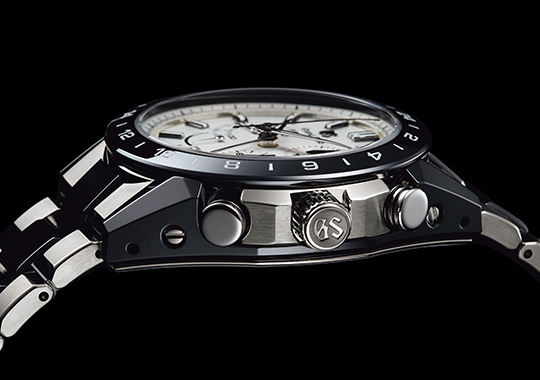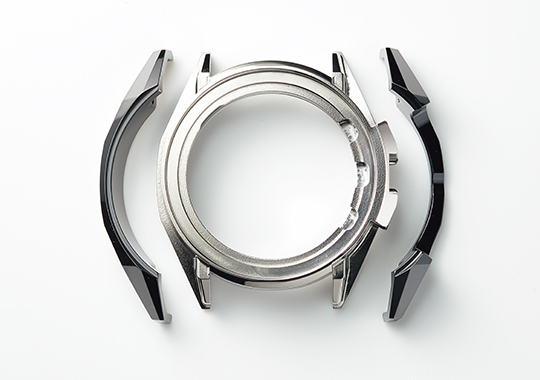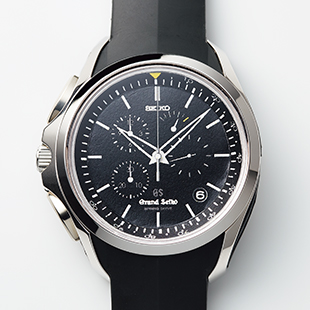EVOLUTION An aesthetic that evolves with state of the art technology and craftsmanship.
Immediately after the launch of the first Spring Drive movement, development of the first Grand Seiko chronograph began. The aim was simple, to make world's most accurate spring driven chronograph. In fact, the original Spring Drive three hand movement had already been conceived as a platform on which other calibers could be built. For example, by placing the power reserve indicator at the 7 to 8 o'clock position, the layout allowed for the future addition of other subdials without compromising the legibility. In other respects, the design was unique, most notably in the form of the large, screw-down push buttons which helped the chronograph operation live up to the extraordinary precision of the caliber. Released in 2007, the first Grand Seiko chronograph more than achieved its aim. Powered by a mainspring, it achieved an accuracy of one second a day, a power reserve of 72 hours, even when the chronograph was in operation and, thanks to the glide motion of the hands, measuring elapsed time to the exact moment not to the nearest ‘tick’. The spring driven chronograph had indeed been re-defined.
Subsequent focus switched on to the aesthetics and exterior qualities of the chronograph. Until 2016, all Grand Seiko chronographs had been in steel but the team decided that such a revolutionary caliber deserved a more innovative presentation. They turned to ceramic. This material was selected because it would make the watch lighter and perhaps more comfortable to wear. Furthermore, the scratch resistance of ceramic had the advantage of preserving the perfect, distortion-free mirror finish and sharp ridges of the design.
Durability being an essential requirement in any Grand Seiko watch, the risk of ceramic being damaged by shock had to be eliminated, so the design team created an inner case made of high-intensity titanium, with the ceramic parts on the exterior, To preserve the smooth and slim profile of the case, the bezel angle was curved and the lugs were given more volume to lower the visual center of gravity and to let the watch sit snugly on the wrist.
Subsequent focus switched on to the aesthetics and exterior qualities of the chronograph. Until 2016, all Grand Seiko chronographs had been in steel but the team decided that such a revolutionary caliber deserved a more innovative presentation. They turned to ceramic. This material was selected because it would make the watch lighter and perhaps more comfortable to wear. Furthermore, the scratch resistance of ceramic had the advantage of preserving the perfect, distortion-free mirror finish and sharp ridges of the design.
Durability being an essential requirement in any Grand Seiko watch, the risk of ceramic being damaged by shock had to be eliminated, so the design team created an inner case made of high-intensity titanium, with the ceramic parts on the exterior, To preserve the smooth and slim profile of the case, the bezel angle was curved and the lugs were given more volume to lower the visual center of gravity and to let the watch sit snugly on the wrist.
Read More

A side view of Grand Seiko SBGC221. The bezel and lugs are curved to lower the visual center of gravity and to ensure a perfect fit to the wrist.

The inner case and case back are made from strong and lightweight high-intensity titanium. The outer ceramic components are screwed in place to absorb shock.
COLUMN
An experimental prototype, code named G-Surface.
A concept model, G-Surface, which combined Zaratsu polished steel and a hard rubber inner case, was made in 2013. It proved that a composite case structure could work and led the way to the use of ceramics and titanium.

